Do All Married Couples Wear Rings?
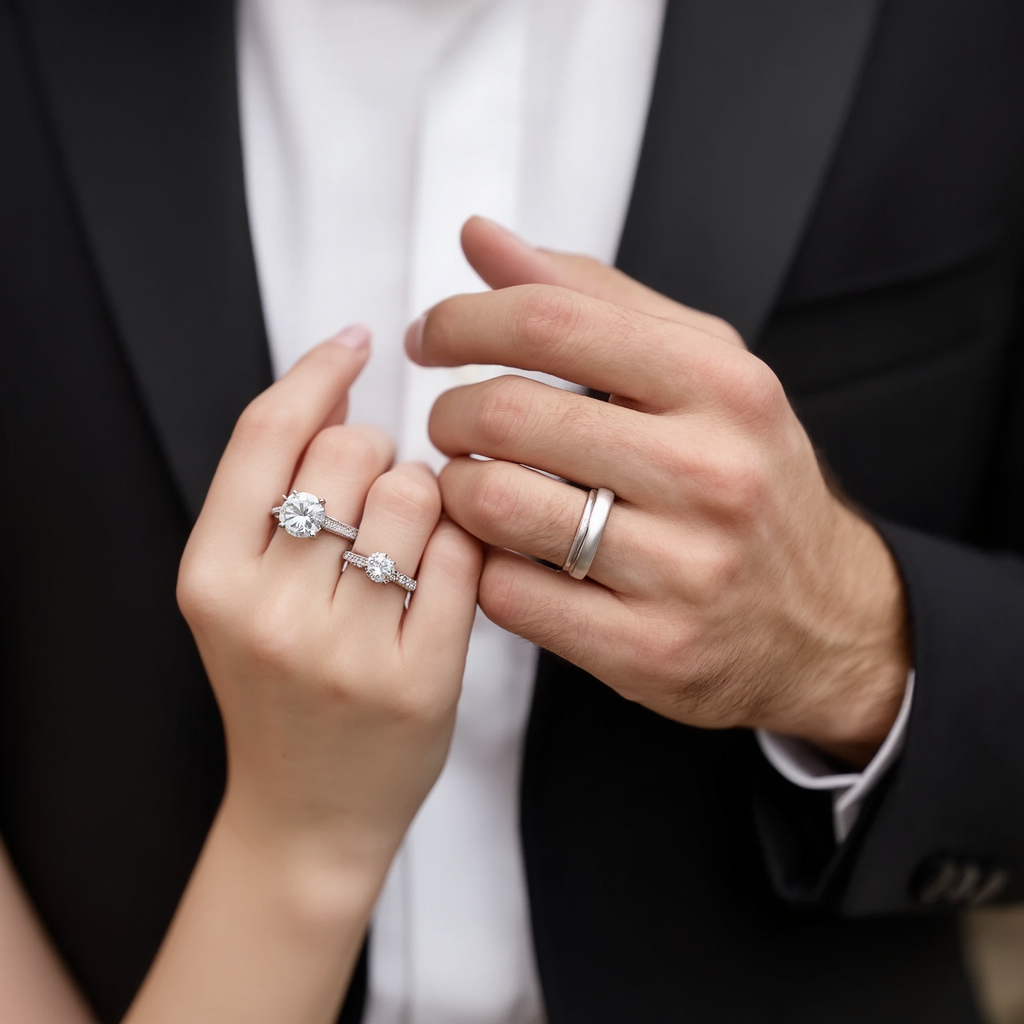
Have you ever wondered if everyone who gets married wears a wedding ring? It might surprise you to learn that not every married couple chooses to wear a ring, and that's perfectly normal! While wedding rings are a powerful symbol of love and commitment, more and more couples are choosing alternative ways to show their bond. Some wear rings only on special occasions, some don't wear them at all, and others opt for non-traditional symbols.
This guide will take a friendly look at why people might choose not to wear a wedding ring, exploring everything from global traditions to personal preferences and practical reasons. We'll also talk about how to navigate social expectations and keep your relationship strong, with or without that piece of jewelry.
Introduction: The Modern Wedding Ring Reality
For centuries, a wedding ring has been the most common sign that someone is married. It's a shiny circle that tells the world, "I'm taken!" But times are changing. Is it still a surprise to see a married person without a ring? Maybe not as much as it used to be.
Many people wonder: Is something wrong if my spouse doesn't wear their ring? Not necessarily! There are lots of good reasons why a ring might not be on someone's finger, and most of them have nothing to do with how much they love their partner. This guide will help you understand the many different paths couples take when it comes to wedding rings.
The Numbers: Statistics & Demographics
Let's start by looking at how many couples actually skip the ring or wear it differently.
A. Global Ring-Wearing Statistics
While it's hard to get exact worldwide numbers, estimates suggest that about 10-20% of married couples might not wear rings. In a recent poll, a "whopping 65 percent" of married women surveyed shared that their ring-wearing habits changed because of the pandemic. Many now wear their rings "based on occasion instead of setting-and-forgetting." This means that even if couples own rings, they might not wear them every day.
● Pandemic Impact Data: The shift in habits during the pandemic, with more people working from home, has definitely played a role. Some women said they didn't put on jewelry if they weren't going out, or that rings got in the way of daily chores like cooking and cleaning.
● Regional Variations and Demographic Breakdowns: Ring-wearing traditions vary greatly around the world. In some cultures, rings are not a traditional part of marriage at all, or they might be worn on a different hand, such as the right hand. To learn more about this, you can read our guide: Why Do Married Couples Wear Rings on the Right Hand?
● Editor's Note: This article is an excellent companion piece to explore the specific cultural reasons why some couples prefer the right hand for their wedding rings.
B. Generational Differences
The younger generations seem to have different ideas about traditional symbols like wedding rings.
● Millennial vs Gen X vs Boomer Practices: This trend of not wearing rings daily is "clearly becoming more mainstream among my millennial and gen x counterparts." Older generations, like Baby Boomers, might be more likely to wear their rings all the time, as it was more of a universal expectation in their youth.
● Changing Attitudes Toward Traditional Symbols: Younger couples often value personal choice and comfort over strict tradition. They might see their commitment as something deeper than a piece of jewelry.
● Social Media Influence on Ring Culture: Social media has made it easier to see how diverse marriage and commitment look, from simple bands to no rings at all, normalizing different choices.
C. Gender-Specific Patterns
There can also be differences in ring-wearing habits between men and women.
● Male vs Female Ring-Wearing Statistics: While many women still love showing off their wedding bands, some men find wearing a ring uncomfortable or unnecessary. In some cases, men may not wear rings due to professional or lifestyle factors, or simply personal preference.
● Professional and Lifestyle Factors by Gender: Certain jobs or hobbies might make it more difficult for men (or women) to wear a ring, leading them to take it off or choose not to wear one.
● Cultural Expectations Differences: In some cultures, it's been more common for women to wear wedding rings than men, though this is changing.
Cultural & Religious Perspectives
The idea that all married couples wear rings is very much a Western idea. Around the world, traditions are quite varied.
A. Global Cultural Practices
● Countries Where Rings Aren't Traditional: In some cultures, other symbols like necklaces, bracelets, or even tattoos are used to mark marriage. In others, the focus is more on the ceremony and public declaration rather than a permanent physical symbol.
● Religious Requirements vs Preferences: While some religions have specific rituals involving rings during the wedding ceremony, they might not strictly require daily wear afterward. For instance, in Orthodox Christianity, the right hand is often preferred for wedding rings.
● Indigenous and Traditional Alternatives: Many indigenous cultures have unique ways to celebrate marriage that don't involve rings at all, focusing instead on shared rituals, clothing, or other symbolic items.
B. Modern Multicultural Marriages
When people from different backgrounds marry, they often have to figure out how to blend their traditions.
● Blending Different Cultural Expectations: A couple might come from backgrounds where one wears a ring on the left hand, and the other on the right, or where one culture doesn't use rings at all. This can lead to interesting conversations and compromises.
● Compromise Strategies for Mixed Traditions: Couples might choose to wear rings on different hands, or one partner might wear a ring while the other doesn't, depending on their comfort and mutual agreement.
● Respectful Adaptation Approaches: The key is open communication and respect for each other's heritage and personal feelings.
Practical Reasons People Don't Wear Rings
Sometimes, not wearing a wedding ring is simply a matter of safety, health, or convenience.
A. Safety & Workplace Restrictions
For many, safety at work is the main reason for not wearing a ring.
● Industry-Specific Hazards (Electrical, Healthcare, Manual Labor): In jobs where machinery is involved, or where there's a risk of electrocution or a ring getting caught, it's safer to remove metal rings. Welders, electricians, mechanics, and even healthcare workers (due to hygiene) often choose not to wear rings.
● OSHA Guidelines and Workplace Policies: The Occupational Safety and Health Administration (OSHA) advises against wearing conductive jewelry like rings "when work is performed within reaching distance of exposed energized parts of equipment" or if they "might contact exposed energized parts." While OSHA doesn't "approve" specific items, they recommend non-conductive options like silicone rings in hazardous environments.
● Professional Appearance Considerations: In some very specific roles, a ring might be seen as unprofessional or a distraction.
B. Health & Comfort Issues
Even outside of work, personal health and comfort can make wearing a ring difficult.
● Metal Allergies and Skin Sensitivities: Some people are allergic to certain metals found in rings, like nickel. This can cause rashes, itching, or skin irritation.
● Arthritis and Joint Problems: As people get older, or if they have conditions like arthritis, their fingers can swell, making rings uncomfortable or impossible to wear.
● Weight Fluctuations and Sizing Issues: Fingers can change size due to weight gain or loss, pregnancy, or even temperature. A ring that once fit perfectly might become too tight or too loose, leading to it being taken off.
● Hygiene and Maintenance Concerns: Rings can trap dirt, germs, and moisture, which can be an issue for people who frequently wash their hands or work in sterile environments.
C. Lifestyle & Personal Preferences
Beyond safety and health, many reasons are simply about how people live their lives.
● Active Lifestyle Incompatibility: If you're very active, enjoying sports, hiking, or working out, a metal ring can be a hindrance, uncomfortable, or even dangerous. It can get scratched, bend, or cause injuries like "ring avulsion," where the ring rips off skin and tissue.
● Jewelry Aversion and Minimalism: Some people just don't like wearing jewelry. They prefer a minimalist approach and find rings uncomfortable or unnecessary.
● Risk Aversion (Loss, Theft, Damage): Wedding rings are often expensive and deeply sentimental. The fear of losing, damaging, or having it stolen can lead people to keep it in a safe place instead of wearing it daily.
● Cost Considerations: While not a reason not to wear a ring after marriage, the cost of a traditional ring can be a factor in choosing alternatives or not having one at all.
Psychological & Social Aspects
The decision to wear a ring, or not, can also touch on deeper feelings about trust, social norms, and how others see your relationship.
A. Relationship Security & Trust
● Expert Perspectives on Rings and Commitment: Relationship experts emphasize that a physical ring is just a symbol. What truly matters is the commitment and trust between partners. "There's no evidence that non-ring-wearers see their romantic commitments as any less secure."
● Communication Importance Over Symbols: Open and honest communication is far more important than a ring. If a couple has discussed and agreed upon not wearing rings, their bond is likely strong.
● Trust-Building Beyond Physical Tokens: True trust is built through actions, honesty, and consistent behavior, not just by wearing a piece of jewelry.
B. Social Perceptions & Judgments
● Dealing with Societal Expectations: Despite changing norms, society often still expects married individuals to wear rings. This can lead to questions or assumptions if a ring is absent. Some people "perceived married men without wedding rings as not taking their marriages as seriously."
● Professional Networking Considerations: In some professional circles, wearing a ring might be seen as signaling stability or traditional values, though this is becoming less rigid.
● Dating/Flirting Assumption Management: A person without a ring might be mistakenly assumed to be single. This can lead to awkward situations or unwanted attention. Some individuals report getting more attention from the opposite sex when they wear a ring, while others report less.
C. Relationship Counselor Insights
● When Ring Absence Might Indicate Problems: While generally not a red flag, a sudden, unexplained decision to stop wearing a ring without discussion could be a "red flag and an indication of trouble" if it's done intentionally in public spaces. However, it's the context and intention that truly matter.
● Healthy vs Concerning Ring-Related Behaviors: It's healthy if the decision is mutual and based on practical or personal reasons. It's concerning if one partner hides their marital status or removes the ring to mislead others.
● Communication Strategies for Couples: The best approach is always to talk about it. Understand each other's reasons and make a decision that both partners are comfortable with.
Ring Alternatives & Compromises
If a traditional metal ring isn't right for you, there are many other ways to symbolize your marriage.
A. Alternative Materials
● Silicone Rings for Active Lifestyles: These flexible, non-conductive rings are becoming very popular. They are safe for sports, manual labor, and jobs where metal rings are a hazard. They also prevent ring avulsion injuries.
● Hypoallergenic Options (Titanium, Platinum, Wood, Ceramic): For those with metal allergies, there are many beautiful alternatives that won't irritate the skin.
● Temporary/Occasion-Based Solutions: Some couples choose to wear a stand-in ring for daily use and save their traditional wedding ring for special occasions. If you're curious about what are promise rings for couples, these can sometimes serve a similar purpose of commitment.
B. Non-Ring Symbols
Commitment doesn't have to be a circle on your finger.
● Tattoo Rings and Permanent Alternatives: Beyoncé and Jay-Z, for example, have matching Roman numeral tattoos on their ring fingers instead of traditional rings. This is a permanent and unique way to symbolize their bond.
● Necklaces and Pendants: Some people wear their wedding ring on a chain around their neck, especially if they can't wear it on their finger for work or safety reasons.
● Watches and Other Jewelry: A special watch, bracelet, or other piece of jewelry can be chosen as a shared symbol of commitment.
● Custom Symbolic Items: Couples can get creative and find any item that holds special meaning for them, from matching accessories to personalized artwork. You can also look to buy Engagement Rings for Couples that are meant to be worn in non-traditional ways.
C. Flexible Wearing Approaches
● Occasion-Based Wearing Strategies: Many couples now treat their wedding and engagement rings as "special occasion jewelry," wearing them only for events, dinners, or when going into the office.
● Work vs Personal Time Solutions: A common practice is to wear a ring outside of work, but remove it or switch to a silicone band during working hours.
● Travel and Activity-Specific Alternatives: To avoid loss or damage, couples might leave their precious rings at home when traveling or engaging in certain activities. It's also worth asking, do both couples get engagement rings? The increasing trend for both partners to receive engagement rings also highlights the evolving nature of ring traditions.

Expert Perspectives & Research
What do experts say about this evolving trend?
A. Relationship Counselors & Psychologists
● Marriage Stability Research: While research directly linking ring-wearing to marital stability is limited, counselors often emphasize that open communication and mutual respect are far better indicators of a strong relationship than whether a ring is worn.
● Symbol Importance in Relationships: Symbols are powerful because of the meaning we give them. If a ring isn't working for a couple, they can find other symbols that are just as meaningful, if not more so.
● Communication and Trust Factors: A marriage coach suggests that if a partner intentionally chooses not to wear their ring in public to deceive others, it's a red flag. But if it's a mutual decision based on practicalities, it's fine.
B. Cultural Anthropologists
● Evolution of Marriage Symbols: Cultural anthropologists study how customs change over time. They see the shift away from mandatory ring-wearing as a natural evolution in a more individualistic and globalized society.
● Cross-Cultural Commitment Practices: They remind us that rings are just one of many ways people across the world have symbolized commitment throughout history.
● Modernization of Traditions: As societies become more diverse and interconnected, traditions adapt. The "right" way to signify marriage is becoming whatever feels right for the couple.
C. Jewelry Industry Insights
● Sales Trends and Market Data: The jewelry industry is noticing these shifts. There's a growing market for alternative rings (like silicone) and for pieces that reflect diverse lifestyles.
● Consumer Behavior Research: This research helps jewelers understand why people are making different choices, from seeking comfort to valuing practicality.
● Alternative Product Development: The rise of new materials and designs in wedding jewelry reflects the growing demand for options that fit modern lifestyles. When you order Wedding Rings for Couples, you'll find a wider range of materials and styles available than ever before.
Making the Decision: A Couples' Guide
So, how do you and your partner decide what's best for you?
A. Assessment Questions
Start by asking yourselves some important questions:
● Personal Values and Priorities: What does marriage mean to you, and what symbols truly represent that? Is wearing a ring a high priority, or is comfort/safety more important?
● Practical Considerations Checklist: Do your jobs or hobbies make wearing a ring difficult or unsafe? Do you have allergies or sensitivities?
● Partner Compatibility Evaluation: Do you both agree on the importance (or lack thereof) of wearing a ring? How do your personal preferences align? Do Couples Pick Wedding Rings Together? This is often a good time to discuss these choices.
B. Communication Strategies
Open and honest talks are key.
● Discussing Expectations Openly: Don't assume your partner feels the same way you do. Talk about what wearing a ring means to each of you.
● Compromise and Negotiation Tips: If you have different preferences, can you find a middle ground? Maybe one partner wears a ring, or you both wear alternative rings for certain situations.
● Respecting Different Preferences: Even if you don't fully understand your partner's choice, respect their reasons and support their decision.
C. Trial Periods & Adjustments
● Testing Different Approaches: Try wearing a silicone ring, or wearing your metal ring only on weekends, to see what feels best.
● Adapting to Life Changes: What works when you first get married might not work years down the line, especially with career changes, new hobbies, or health issues. Be open to revisiting your decision.
● Revisiting Decisions Over Time: Your choices aren't set in stone. It's okay to change your mind as your life evolves. And remember, if you're wondering do couples split the cost of an engagement ring, this is another personal decision with no single right answer, and can vary from couple to couple.
Celebrity & Public Figure Examples
Even famous people are embracing the choice not to wear rings.
A. Famous Non-Ring Wearers
● Celebrity Couples Who Don't Wear Rings: Prince William famously doesn't wear a wedding ring due to "personal preference." Other celebrities like Will Smith and Jada Pinkett Smith, and David Cameron have also been seen without them. Beyoncé and Jay-Z have matching Roman numeral tattoos on their ring fingers instead of traditional rings.
● Public Figures' Alternative Choices: Ivanka Trump wears her ring on her right hand. These choices by public figures help normalize the idea that a ring isn't always on the finger.
● Media Coverage and Public Reactions: When celebrities don't wear rings, it often makes headlines, sometimes leading to speculation about their relationship. However, as one expert notes, "it isn't cause for judgment or something unacceptable; it's a reflection of a modern society and its flexibility."
B. Professional Considerations
● Actors and Ring Removal for Roles: Actors frequently remove their rings for roles, and their partners understand this professional necessity.
● Athletes and Safety Requirements: Athletes, especially in contact sports, rarely wear metal rings during competition to prevent injury.
● Public Figures' Image Management: Some public figures might make conscious decisions about wearing or not wearing a ring as part of their public image, though this is less common than personal or safety reasons.
Addressing Common Concerns
Choosing not to wear a ring can sometimes lead to questions from family and friends. Here's how to handle them.
A. Family & Social Pressure
● Managing Family Expectations: Your family might have strong traditional views. It's helpful to explain your reasons calmly and kindly, focusing on your personal comfort or practical needs rather than dismissing their beliefs.
● Educational Conversation Strategies: You can educate loved ones about the diverse global traditions or the practical reasons for your choice.
● Setting Healthy Boundaries: It's okay to politely say that it's a personal decision you and your partner made together.
B. Professional Implications
● Workplace Perceptions and Networking: In most modern workplaces, not wearing a ring is unlikely to cause issues. However, if your job involves specific safety protocols (like those related to OSHA guidelines), it's important to follow them.
● Industry-Specific Considerations: If you're in a highly traditional industry, you might choose to wear a simple band or an alternative when networking.
● Maintaining Professional Relationships: Focus on your work and professionalism, and your ring choice will rarely be a barrier.
C. Travel & Security Considerations
● International Travel Implications: When traveling, especially to cultures with different norms, consider whether wearing or not wearing a ring might draw unwanted attention. Sometimes, it's safer not to wear an expensive ring.
● Insurance and Security Concerns: Many couples opt to keep their valuable rings in a safe place when traveling to avoid loss or theft.
● Cultural Sensitivity While Traveling: Being aware of local customs can help you avoid misunderstandings, though personal choice is increasingly accepted.
Frequently Asked Questions
Here are some common questions people ask about not wearing wedding rings:
1. Is it a sign of marital trouble if someone doesn't wear a wedding ring?
Not usually. While a sudden, unexplained absence of a ring could be a sign, most couples who don't wear rings have practical, personal, or cultural reasons that they've discussed together.
2. Are there any legal requirements to wear a wedding ring?
No. A wedding ring is a symbol, not a legal requirement. Marriage is a legal contract, and its validity doesn't depend on wearing a ring.
3. What percentage of married couples don't wear rings?
Estimates vary, but some data suggests around 10-20% of married couples might not wear rings daily, or at all. A recent poll indicated that 65% of married women changed their ring-wearing habits due to the pandemic, often wearing them only on occasion.
4. Why do so many men not wear their wedding rings?
Common reasons for men include discomfort, jobs where rings can be dangerous (like manual labor or electricians), fear of damage or loss, or simply personal preference against wearing jewelry.
5. What are common reasons people don't wear rings due to their job?
Jobs involving machinery, electricity, healthcare, or heavy manual labor often lead people to remove or avoid wearing metal rings due to safety concerns like ring avulsion or electrocution.
6. Are silicone rings OSHA approved?
OSHA doesn't "approve" specific items. However, their guidelines state that employers must ensure employees remove or render non-conductive any exposed conductive articles (like metal rings) when working near energized parts. Silicone rings are non-conductive and can break under extreme force, making them a safe alternative in hazardous workplaces.
7. Can I get a tattoo instead of a wedding ring?
Yes, many couples choose to get wedding ring tattoos as a permanent and unique symbol of their commitment. Beyoncé and Jay-Z are famous examples.
8. What if I'm allergic to metal rings?
If you have metal allergies, you can choose rings made from hypoallergenic materials like titanium, platinum, wood, ceramic, or silicone.
9. Is it disrespectful to my spouse if I don't wear my ring?
If it's a mutual decision based on open communication and understanding, it's not disrespectful. The key is that both partners are comfortable with the choice.
10. How do I deal with family members who ask why I'm not wearing my ring?
Politely explain your reasons (e.g., "It's safer for my job," "We prefer other symbols," "It's a comfort thing for me") and emphasize that it's a personal choice you and your partner made together.
11. Do divorced people still wear their wedding rings?
Some may choose to continue wearing it for a period, or move it to a different finger or hand, or stop wearing it entirely. There's no single rule.
12. Can wearing a ring on a necklace be a wedding symbol?
Yes, wearing your wedding ring on a necklace is a popular alternative, especially if you can't wear it on your finger for practical reasons.
13. Does not wearing a ring affect my public image or career?
In most modern settings, it has little to no impact. In certain specialized fields, safety might be a factor, but typically, professionalism and competence are far more important than jewelry.
14. What are some celebrity examples of non-ring wearers?
Prince William, Will Smith, Jada Pinkett Smith, David Cameron, Beyoncé, and Jay-Z are all known for not wearing traditional wedding rings.
15. Is it common for wedding rings to be removed during certain activities?
Yes, it's very common to remove rings for activities like sports, gardening, cooking, or heavy cleaning to prevent damage or injury.
16. What is "ring avulsion"?
Ring avulsion is a serious injury that happens when a ring gets caught on an object and is forcefully pulled off the finger, causing severe damage to the tissue, tendons, and bone, sometimes leading to amputation.
17. Do some religions forbid wearing rings?
While many religions incorporate rings, some denominations or traditional interpretations may discourage or have no tradition of wearing rings, prioritizing modesty or other symbols.
18. How do couples decide if they should wear rings?
The best way is through open and honest conversation, discussing personal comfort, lifestyle, professional needs, cultural background, and what symbols hold the most meaning for both partners. You might want to consider going to shop couple rings together, even if just to explore options and discuss what feels right.
19. Can you wear a wedding ring only for special occasions?
Absolutely! This is a growing trend, with many people opting to wear their precious rings only for formal events or when they leave the house.
20. What if only one spouse wants to wear a ring?
This is a perfectly valid choice. Many couples agree that one partner will wear a ring while the other doesn't, based on individual preferences or practical needs.
21. Are commitment rings the same as wedding rings?
Commitment rings are a broader category. They signify a serious promise or bond between partners and are not always tied to marriage. They can be worn on any finger.
22. How has the work-from-home trend impacted ring-wearing?
Many people working from home report wearing their rings less often because they don't feel the need to "get dressed" or worry about it getting in the way of daily chores.
23. Is it possible for a ring to "shrink" over time?
No, rings don't actually shrink. However, your finger size can change due to factors like weight changes, swelling from heat, or arthritis, making a ring feel tighter.
24. What are some non-traditional alternatives to rings?
Beyond tattoos and necklaces, couples might choose matching watches, custom-designed bracelets, or even symbolic artwork for their home to represent their union.
25. Does a wedding ring protect against infidelity?
A wedding ring is a symbol, not a magic charm. While it may signal to others that a person is married, true fidelity comes from trust, commitment, and healthy communication within the relationship, not solely from a piece of jewelry.
Conclusion: Commitment Beyond Symbols
In the end, whether a married couple chooses to wear rings, or any other symbol, is a deeply personal decision. The idea that "all married couples wear rings" is a tradition that is beautifully evolving. While rings remain a cherished symbol for many, the modern landscape of relationships values personal choice, comfort, and safety more than ever before.
The true strength of a marriage lies not in the jewelry exchanged, but in the unwavering commitment, trust, and open communication between two people. So, whether you wear a gleaming band, a subtle silicone ring, a meaningful tattoo, or nothing at all, your bond is valid and unique. The future of marriage symbols is one where love, in all its diverse expressions, shines brightest.




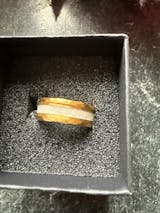
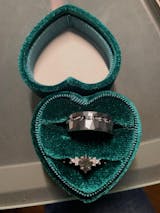

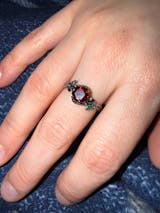
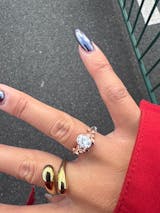

Leave a comment